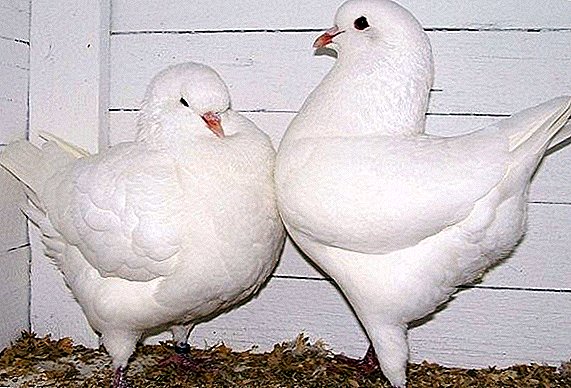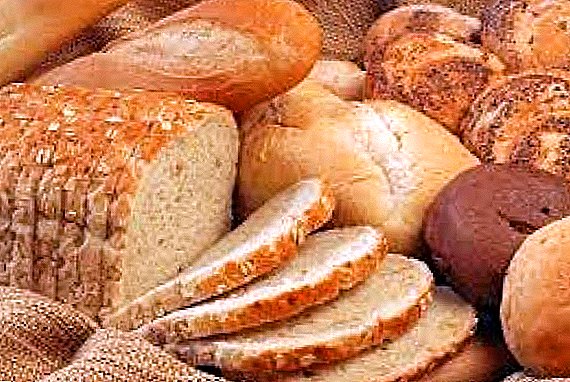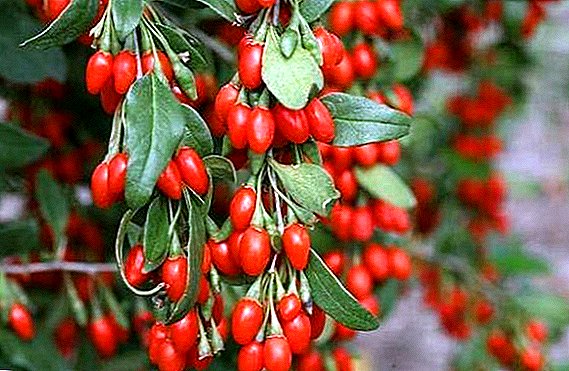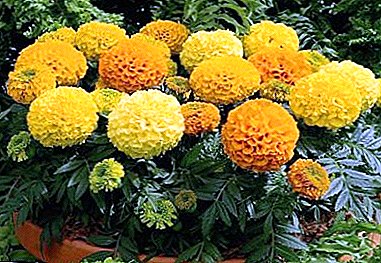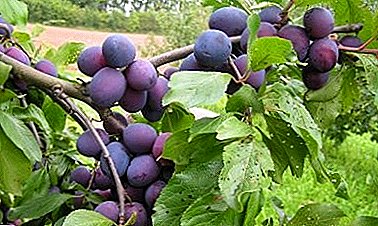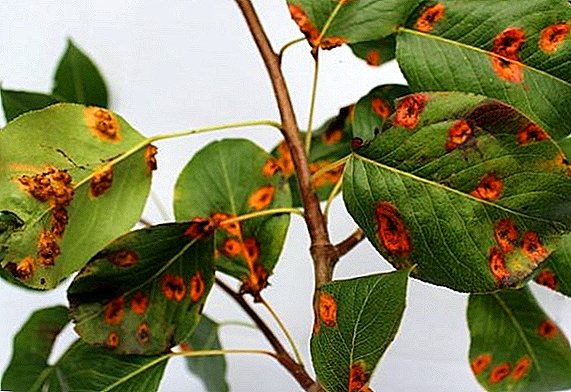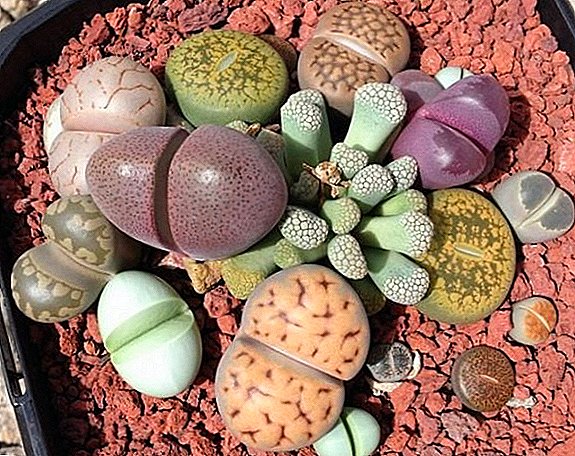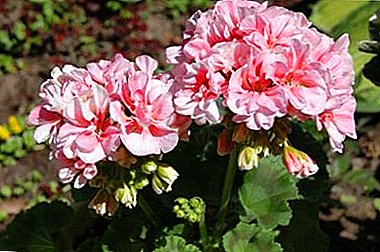
Pelargonium is one of the few plants that captivates not only with its appearance, but also with a pleasant aroma. Delicate buds, characterized by a variety of shades, make this flower one of the most popular among gardeners in many countries of the world.
Europeans have been enjoying this plant for more than three hundred years. But in order to admire the flowering of Pelargonium, you need to know how to properly care for it. Today we analyze the cultivation of Pelargonium South.
Botanical description and history
The described flower is a perennial herbaceous, sometimes semi-shrub plant. Inflorescences differ in irregular forms. The shade of petals is different: from pale pink to red.
The fruit of these flowers is a box with sepals. Green leafy bright plates. These leaves are slightly pripusheny small villi, which are not very densely to each other.
I would like to talk about the domestic breeder Julia Gonchar. In her track record, too, many new varieties.
For example pelargonium:
- South-Aksinya.
- South Alexander.
- South Anise.
- South Giselle.
- South-Esenia.
- South Day.
- South Tamil.
- South Ireland
- South-Siberia.
- South Eter.
Varieties: description and photo
We describe the most popular varieties - Shukar, Varvara Krasa, Nina, Kamalia.
Nina

The species belongs to the zonal genus, is a dwarf variety. On the buds are very densely located petals that are a little terry. Their shade is delicate pink with purple tint. The bush turns out very magnificent, but at the same time because of dwarfism it leaves compact. Due to its pomp, buds resemble rose buds.
Shoots and peduncles dense, fleshy, grow exactly up. The leafy plates of a pale green color, even a little with a golden tint, have brown edges.
A stalk of this sort will cost about 1000-1500 rubles.
Shukar

This is another representative of the zonal view. The size of the bush is standard, but requires regular pruning to form a beautiful shape. Inflorescences are scattered on different sides. Petals accept all shades of red: from scarlet to saturated cherry. Flowers are found both simple and terry. It all depends on the care. The petals are slightly oblong in shape.
The name "Shukar" in Greek means "beauty."
Reference! You can buy a young Shukar for about 1000-1200 rubles.
Varvara Krasa

Also a zonal plant that grows extremely straight. This variety is dwarf (how to properly care for dwarf pelargonium, read here). The bush grows very thick, dense, does not require pruning - the correct form is created as it grows.
Buds are large relative to the leaves and sizes of the whole plant as a whole. Petals are terry to the touch, pale pink in color. But with good lighting, they become more saturated. This variety blooms profusely and for a long time.
Reference! A young plant is sold at a price of 500-700 rubles.
Kamalia

Again representative dwarf. The bush is very lush, leafy plates of a standard green color. The flowers have an unusual shape, from a distance they seem slightly worn. The hue of the petals varies from pale pink to deep.
The main characteristic of Kamalia is its long flowering, even in the cold season. On the texture of terry buds.
Reference! The price of one cutting varies from 500 to 700 rubles.
Where and how to plant?
Pot for Pelargonium South recommend choosing not very large. Since its size directly affects the formation of the beautiful shape of the bush and the profusion of flowering. It is worth noting that in large flowerpots this plant almost never blooms. Well, if the capacity for landing will be made of clay.
When planting, do not forget about the drainage layer, the thickness of which should be at least 2 centimeters.
- Landing procedure:
- Pelargonium South should be placed in a pot very carefully, as the root system of this flower is very fragile.
- It is necessary to drag the ground only, but in no case to tamp it.
- Lightly sprinkle water from above at room temperature.
 Choice of location and lighting.
Choice of location and lighting.There should be a lot of light, therefore it is recommended to place Pelargonium South from the south or east side of the room. An important element of care is regular airing so that the plant does not bloom. If the flower lacks light, the leaves will begin to turn yellow, and the lower ones will disappear altogether.
To form the correct bush, the plant must be periodically turned by different sides towards the sun.
- Priming.
For Pelargonium South, a loose, nutrient substrate is needed that easily passes water and air. Usually buy soil already finished in the store. But you can cook it yourself. To do this, you need to take the following components in the same proportions: leaf and sod land, peat, humus and large river sand. Acidity of the soil should be neutral.
How to care?
- It is necessary to moisten the soil regularly, but at the same time ensure that the water in the pot does not stagnate. In the summer, watering is sufficient once a week. And in winter you can still reduce watering - up to once per decade. On the excess moisture florist tell rotting rhizomes, leaves and stems.
- To humidity of the air Pelargonium South has no special requirements. But more comfortable the plant will feel at low humidity - about 60%. It is worth refusing from spraying in general.
- In the warm season it is worth maintaining the temperature within 20-23 degrees above zero. It is not worth raising above, as the plant can simply grow clear.
- In winter, Pelargonium enters a state of rest. At this time, the temperature drops to 15-17 degrees. At the same time airing has not been canceled. This period usually lasts from late November to February. In early spring, the plant begins to awaken.
- Prune the Pelargonium South regularly to form a beautiful bush. It is better to use sterile materials for this. It is also necessary to pinch too long shoots so that they do not break under the weight of their weight.
- But with a transfer is not necessary. The flower does not tolerate this procedure. Therefore, it is better to change his place of residence no more than once every 2-3 years.
- It is necessary to fertilize during the period of active growth and flowering. Use for this is ready-made complexes, strictly adhering to the instructions and dosage.
Attention! In very hot weather, Pelargonium South need not be fed.
Diseases and pests
 This plant, although resistant to the attacks of ailments, can sometimes be subject to such troubles:
This plant, although resistant to the attacks of ailments, can sometimes be subject to such troubles:
- gray mold;
- root collar rot;
- rust.
For the prevention of their appearance Pelargonium South treated with antifungal agent. BUT to combat diseases and pests use fungicides.
The affected areas are immediately removed.
Before purchasing the flower must be inspected for ailments, and then - immediately treated with insecticides.
Breeding features
- Cuttings:
- After flowering, a process is cut off, on which there will be at least three leaves.Reference! Slices must be treated with ash.
- Then the stalk is placed in water until the first roots appear. (It usually takes about two weeks). At the same time, the air temperature should not be below +20 degrees.
- After the roots appear, the process is transplanted into a permanent pot.
- After flowering, a process is cut off, on which there will be at least three leaves.
- Dividing bush:
- It is better to combine this process with a transfer.
- To do this, remove the plant from the pot, shake off the roots from the ground and separate them so that 2-3 buds remain on each part.
- Then plant flowers in flowerpots.
Pelargonium South grows very easily at home. To do this, just follow the simple rules of care, and this should be done regularly.


 Choice of location and lighting.
Choice of location and lighting.